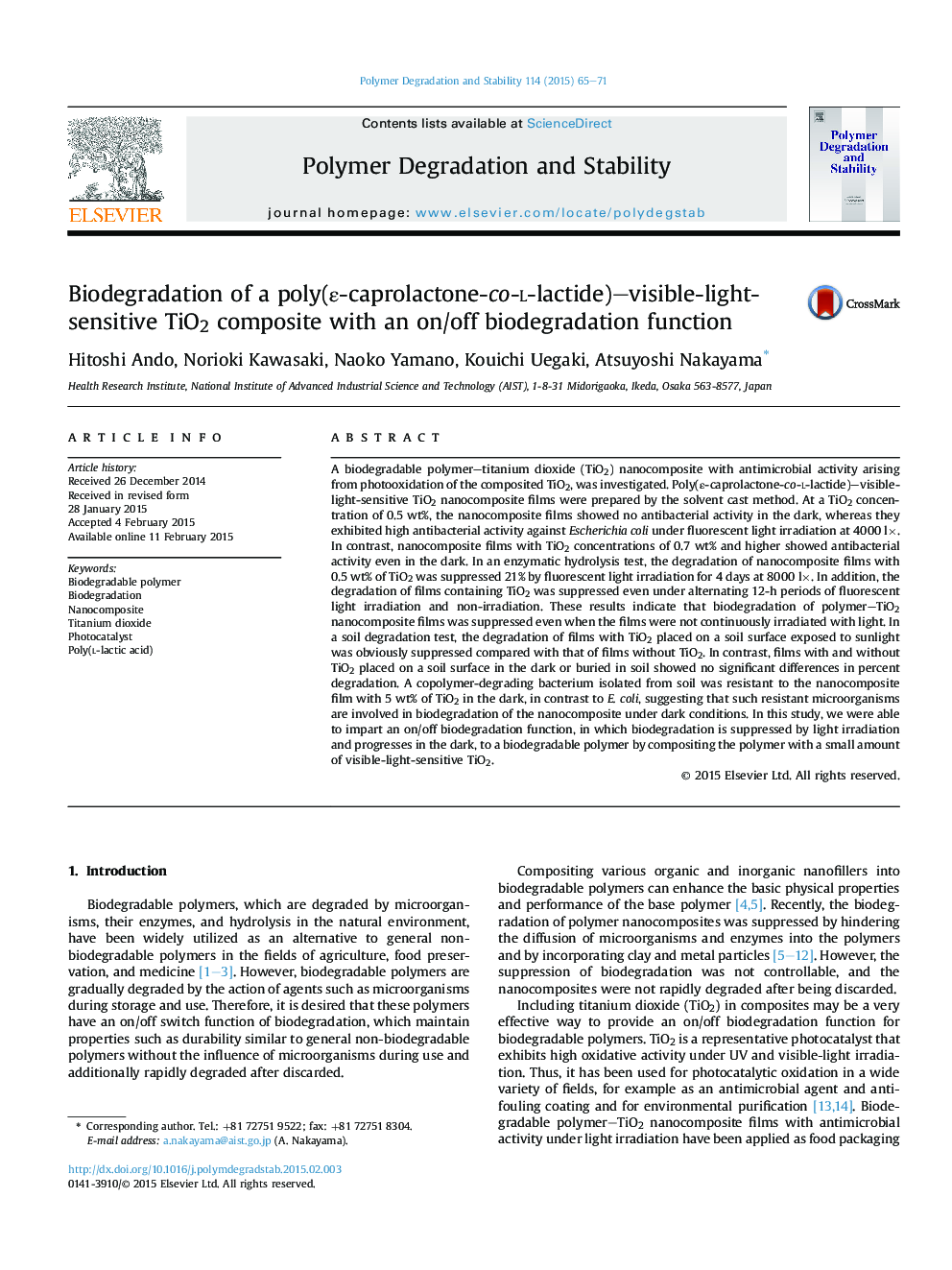| کد مقاله | کد نشریه | سال انتشار | مقاله انگلیسی | نسخه تمام متن |
|---|---|---|---|---|
| 5201586 | 1502899 | 2015 | 7 صفحه PDF | دانلود رایگان |

A biodegradable polymer-titanium dioxide (TiO2) nanocomposite with antimicrobial activity arising from photooxidation of the composited TiO2, was investigated. Poly(ε-caprolactone-co-l-lactide)-visible-light-sensitive TiO2 nanocomposite films were prepared by the solvent cast method. At a TiO2 concentration of 0.5 wt%, the nanocomposite films showed no antibacterial activity in the dark, whereas they exhibited high antibacterial activity against Escherichia coli under fluorescent light irradiation at 4000 lÃ. In contrast, nanocomposite films with TiO2 concentrations of 0.7 wt% and higher showed antibacterial activity even in the dark. In an enzymatic hydrolysis test, the degradation of nanocomposite films with 0.5 wt% of TiO2 was suppressed 21% by fluorescent light irradiation for 4 days at 8000 lÃ. In addition, the degradation of films containing TiO2 was suppressed even under alternating 12-h periods of fluorescent light irradiation and non-irradiation. These results indicate that biodegradation of polymer-TiO2 nanocomposite films was suppressed even when the films were not continuously irradiated with light. In a soil degradation test, the degradation of films with TiO2 placed on a soil surface exposed to sunlight was obviously suppressed compared with that of films without TiO2. In contrast, films with and without TiO2 placed on a soil surface in the dark or buried in soil showed no significant differences in percent degradation. A copolymer-degrading bacterium isolated from soil was resistant to the nanocomposite film with 5 wt% of TiO2 in the dark, in contrast to E. coli, suggesting that such resistant microorganisms are involved in biodegradation of the nanocomposite under dark conditions. In this study, we were able to impart an on/off biodegradation function, in which biodegradation is suppressed by light irradiation and progresses in the dark, to a biodegradable polymer by compositing the polymer with a small amount of visible-light-sensitive TiO2.
Journal: Polymer Degradation and Stability - Volume 114, April 2015, Pages 65-71